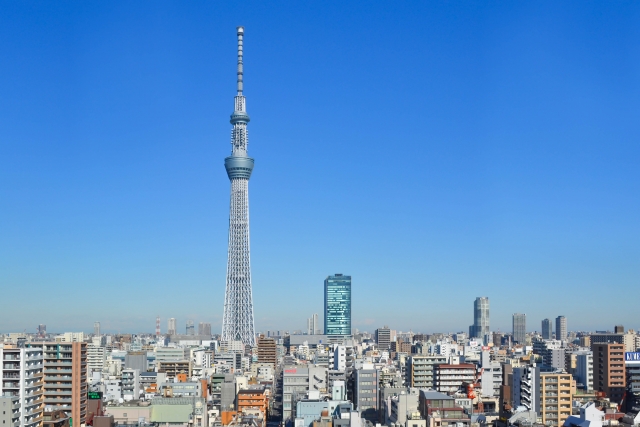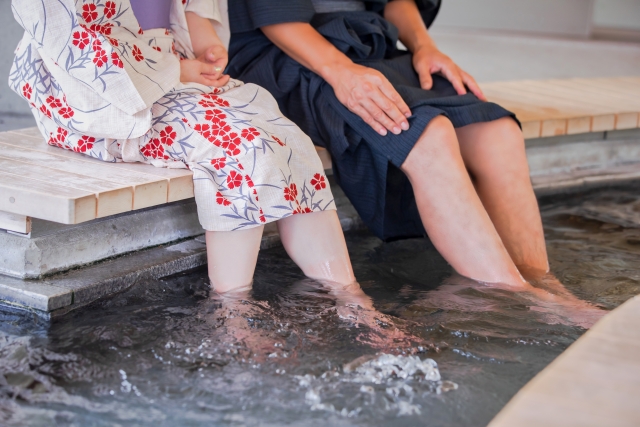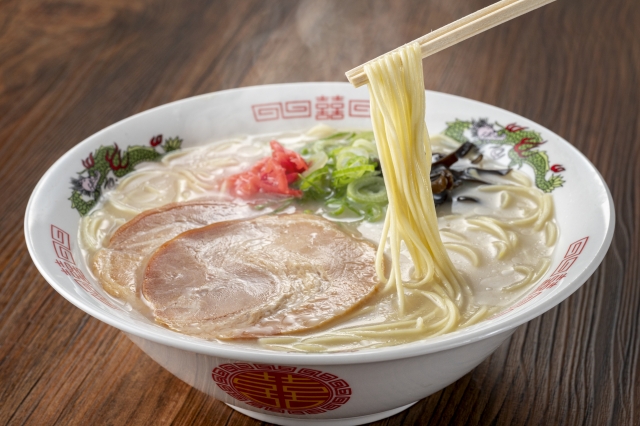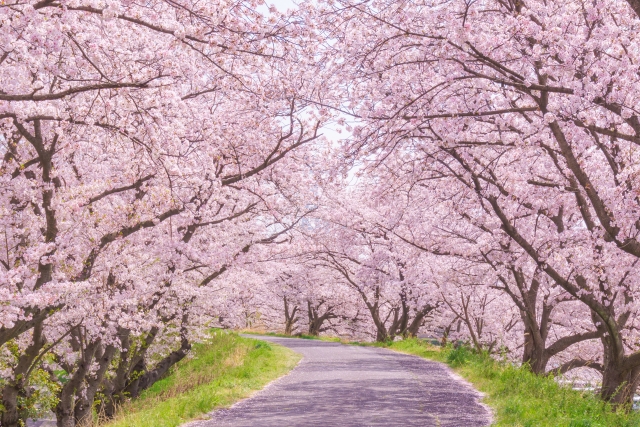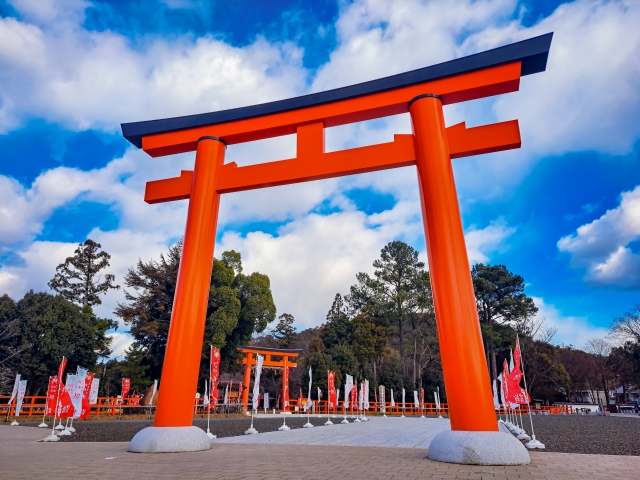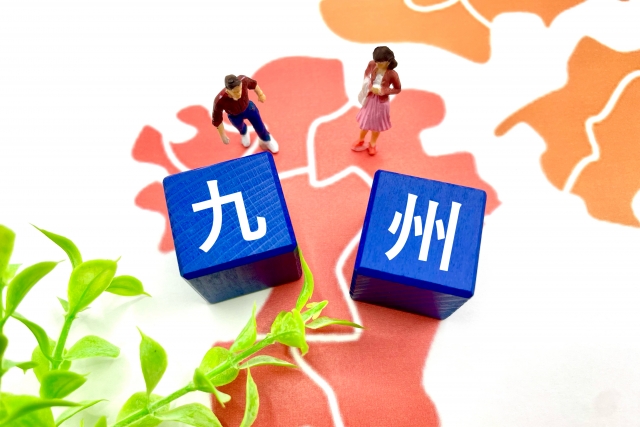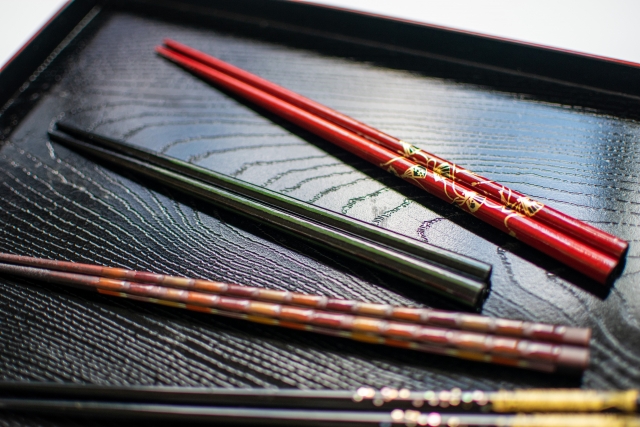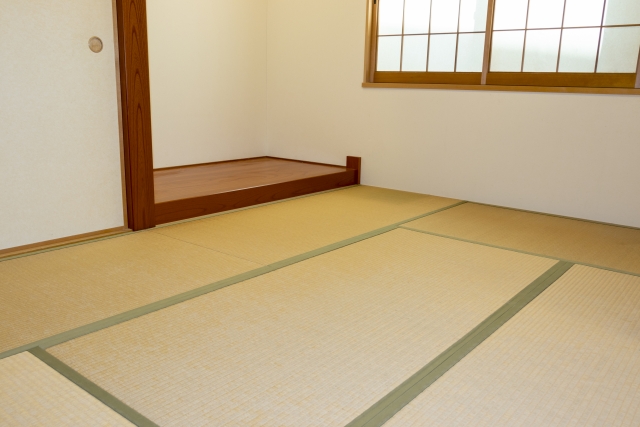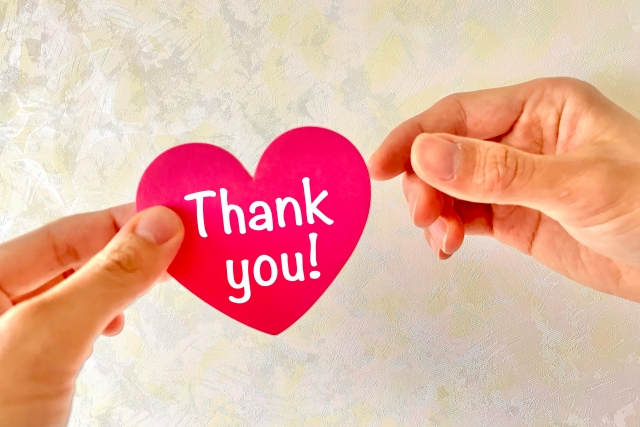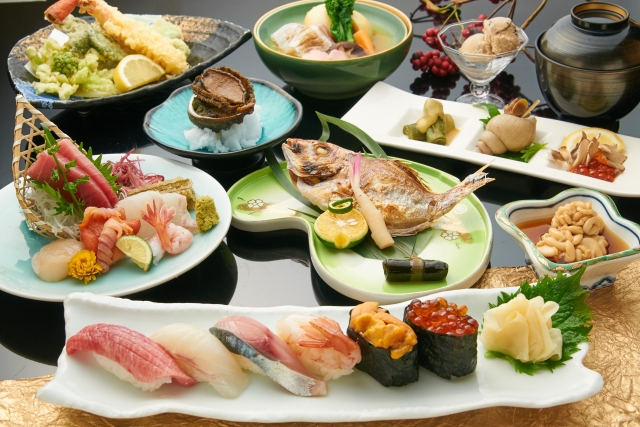“When traveling or doing business in Japan, it is necessary to understand the Japanese currency and etiquette.
Japanese currency is denominated in “”yen”” and is the third most traded currency in the foreign exchange market after the US dollar and the euro. Currently, there are four types of bills issued: 1,000 yen, 2,000 yen, 5,000 yen, and 10,000 yen, with various people and designs printed on each type.
Let’s take a closer look at what specific types of money and manners are available.
 A 10,000 yen bill is the highest denomination bill. The portrait of Yukichi Fukuzawa, the founder of Keio University, as a person of dignity is printed on the front side. And the statue of the Phoenix of Hoo-do hall of Byodoin temple in Uji is printed in the back side, which is one of Japan’s national treasures. The 10,000 yen bill is enough to enjoy a day of sightseeing.
A 10,000 yen bill is the highest denomination bill. The portrait of Yukichi Fukuzawa, the founder of Keio University, as a person of dignity is printed on the front side. And the statue of the Phoenix of Hoo-do hall of Byodoin temple in Uji is printed in the back side, which is one of Japan’s national treasures. The 10,000 yen bill is enough to enjoy a day of sightseeing.
 On the front side, there is a portrait of Ichiyo Higuchi, who, as a woman, was struggling with the social trends of the Meiji era, but was able to express her various thoughts and feelings in her novels, leaving behind many masterpieces. Since the portrait on the front is of a woman, it was thought appropriate to use a flower rather than an animal or a building.
On the front side, there is a portrait of Ichiyo Higuchi, who, as a woman, was struggling with the social trends of the Meiji era, but was able to express her various thoughts and feelings in her novels, leaving behind many masterpieces. Since the portrait on the front is of a woman, it was thought appropriate to use a flower rather than an animal or a building.
 The design on the front side of the 2,000 yen bill is that of Okinawa’s Shureimon gate, and the reverse side is that of the Tale of Genji written by Murasaki Shikibu about 1,000 years ago. In 2000 when the 2,000 yen bill was issued, the Kyushu-Okinawa Summit was held. Therefore the design of Okinawa was selected for it.
The design on the front side of the 2,000 yen bill is that of Okinawa’s Shureimon gate, and the reverse side is that of the Tale of Genji written by Murasaki Shikibu about 1,000 years ago. In 2000 when the 2,000 yen bill was issued, the Kyushu-Okinawa Summit was held. Therefore the design of Okinawa was selected for it.
 The Bank of Japan decided to select a scientist, who had never been selected as a portrait for a bill before, and selected a well-known cultured person from among those who appeared in school textbooks. The portrait of Hideyo Noguchi, known for his research on yellow fever, is printed on the front, and the design of Mount Fuji and cherry blossoms, both familiar to Japan, are printed on the back.
The Bank of Japan decided to select a scientist, who had never been selected as a portrait for a bill before, and selected a well-known cultured person from among those who appeared in school textbooks. The portrait of Hideyo Noguchi, known for his research on yellow fever, is printed on the front, and the design of Mount Fuji and cherry blossoms, both familiar to Japan, are printed on the back.
 The front side has a design of paulownia wood, and the back side has a design of bamboo and Tachibana citrus.
The front side has a design of paulownia wood, and the back side has a design of bamboo and Tachibana citrus.
 The front has a design of cherry blossoms, and the back has the number 100.
The front has a design of cherry blossoms, and the back has the number 100.
 This coin has a hole in the center with a chrysanthemum design on the front and the number 50 on the back.
This coin has a hole in the center with a chrysanthemum design on the front and the number 50 on the back.
 The design of the Hoo-do hall of Byodo-in Temple is on the front, and the number 10 is on the back.
The design of the Hoo-do hall of Byodo-in Temple is on the front, and the number 10 is on the back.
 With a hole in the center, the coin has ears of rice, gears, and water on the front and small cute leaves on the back.
With a hole in the center, the coin has ears of rice, gears, and water on the front and small cute leaves on the back.
 A young tree is printed on the front, and the number 1 is painted in large letters on the back.
A young tree is printed on the front, and the number 1 is painted in large letters on the back.
 There is a premium coin known as the “”Giza 10.
The 10 yen usually has smooth sides, but depending on the year it was manufactured, the sides are jagged and rare, so depending on the condition of the coin, you can get 11 yen to 70 yen for it. If you ever have a chance to get Japanese coins, you may be lucky enough to find one.
There is a premium coin known as the “”Giza 10.
The 10 yen usually has smooth sides, but depending on the year it was manufactured, the sides are jagged and rare, so depending on the condition of the coin, you can get 11 yen to 70 yen for it. If you ever have a chance to get Japanese coins, you may be lucky enough to find one.
 The front side has a portrait of Eiichi Shibusawa, who founded Japan’s first bank (today’s Mizuho Bank) and many other companies and is considered the father of Japanese capitalism, and the back side has a picture of the Tokyo Station building.
The front side has a portrait of Eiichi Shibusawa, who founded Japan’s first bank (today’s Mizuho Bank) and many other companies and is considered the father of Japanese capitalism, and the back side has a picture of the Tokyo Station building.
 The design of this coin will change in 2021, from silver to two colors. The coin will also include anti-counterfeiting technology such as the words “”JAPAN”” and “”500YEN”” on the top, bottom, left and right sides.
The design of this coin will change in 2021, from silver to two colors. The coin will also include anti-counterfeiting technology such as the words “”JAPAN”” and “”500YEN”” on the top, bottom, left and right sides.
 From the point of view of people from countries with a tipping culture, the fact that Japan does not have a habit of tipping may seem very surprising. You may have tried to give a Japanese person a tip in appreciation for their service, but they stubbornly refused, or you may have left money as a tip in your hotel room or at your table in a restaurant, but the staff at the restaurant came to return the money because they thought you forgot it.
For example, when you go to a hotel buffet or a fancy restaurant in Japan, you will rarely find a receipt that says “”service charge”” as a percentage of the total bill, which could be called a tip in Japan. However, even in this case, the tip is already included in the price of the bill, so there is basically no need to think about tipping in Japan. No matter where you are, just pay the amount you are charged and it will be fine. If you want to express your gratitude, simply saying “”Thank you”” will be enough to convey your feelings.
From the point of view of people from countries with a tipping culture, the fact that Japan does not have a habit of tipping may seem very surprising. You may have tried to give a Japanese person a tip in appreciation for their service, but they stubbornly refused, or you may have left money as a tip in your hotel room or at your table in a restaurant, but the staff at the restaurant came to return the money because they thought you forgot it.
For example, when you go to a hotel buffet or a fancy restaurant in Japan, you will rarely find a receipt that says “”service charge”” as a percentage of the total bill, which could be called a tip in Japan. However, even in this case, the tip is already included in the price of the bill, so there is basically no need to think about tipping in Japan. No matter where you are, just pay the amount you are charged and it will be fine. If you want to express your gratitude, simply saying “”Thank you”” will be enough to convey your feelings.
 When sightseeing in Japan, it is more convenient to have some cash on you as well as credit cards. Japan has a low penetration rate of cashless payment compared to other countries, so if you are still in a rural area, you may only be able to pay with cash. In Japan, cashless payment has not been widely accepted due to the high level of trust in cash and the high cost of introducing cashless payment at stores. Recently, however, more and more stores are shifting from cash to cashless payment as part of the Japanese government’s efforts and measures against the new corona. In the future, you will be able to make payments more smoothly.
When sightseeing in Japan, it is more convenient to have some cash on you as well as credit cards. Japan has a low penetration rate of cashless payment compared to other countries, so if you are still in a rural area, you may only be able to pay with cash. In Japan, cashless payment has not been widely accepted due to the high level of trust in cash and the high cost of introducing cashless payment at stores. Recently, however, more and more stores are shifting from cash to cashless payment as part of the Japanese government’s efforts and measures against the new corona. In the future, you will be able to make payments more smoothly.
 Most international airports in Japan have foreign currency exchange stores, but few counters are open 24 hours a day. It is recommended to check the notice board for foreign currency exchange.
Most international airports in Japan have foreign currency exchange stores, but few counters are open 24 hours a day. It is recommended to check the notice board for foreign currency exchange.
 In some large hotels, you can exchange your money into Japanese yen at the front desk.
However, be aware that the service fee is often higher than that of a bank, and it may take longer when the front desk is busy.
In some large hotels, you can exchange your money into Japanese yen at the front desk.
However, be aware that the service fee is often higher than that of a bank, and it may take longer when the front desk is busy.
 Not all banks in Japan offer currency exchange services, but many large banks in major cities do. However, most Japanese banks close at 3:00 p.m. and are closed on weekends and holidays, so it is a good idea to check beforehand. However, in some tourist areas, there may be foreign currency exchange corners with long business hours.
Not all banks in Japan offer currency exchange services, but many large banks in major cities do. However, most Japanese banks close at 3:00 p.m. and are closed on weekends and holidays, so it is a good idea to check beforehand. However, in some tourist areas, there may be foreign currency exchange corners with long business hours.
 Large department stores, shopping malls, and large stations such as Tokyo Station have currency exchange counters or automatic exchange machines. You can often exchange money on weekends as well, so be sure to check.
Large department stores, shopping malls, and large stations such as Tokyo Station have currency exchange counters or automatic exchange machines. You can often exchange money on weekends as well, so be sure to check.
 Japan is often considered to be an expensive country to live in, but for travelers, Japan sometimes seems expensive and other times seems to be affordable.
For groceries such as meat, vegetables, and fruits in supermarkets, you can buy a larger quantity and a wider variety of products for the same price in the US than in Japan. For meat, many Americans prefer red meat, while Japanese prefer marbled meat, but it seems that you can buy more meat at a lower price in the US. Also, since the United States has a racially diverse population that forms a diverse food culture, there are many choices in groceries.
Also, many people feel that cabs and movie theaters are expensive. In the U.S., the price of a movie is much cheaper. If the average price in Japan is about 1,800 yen, the average price in the U.S. is about 11 U.S. dollars, so it seems that movies that should be easy to see are very expensive in Japan.
On the other hand, in some cases, it is only in Japan that you can get a good deal.
For example, at 100 yen stores, you can buy all sorts of useful goods for 100 yen, and many of them are cheaper than what you can get in the US.
Also, family restaurants, which Japanese people often use to enjoy a casual meal out, seem to be cheaper than in the US.
As you can see, at first glance you may think that everything is expensive in Japan, but there are many things that you can enjoy at reasonable prices. One of the joys of sightseeing in Japan may be to find these differences in prices and enjoy the great deals.
Japan is often considered to be an expensive country to live in, but for travelers, Japan sometimes seems expensive and other times seems to be affordable.
For groceries such as meat, vegetables, and fruits in supermarkets, you can buy a larger quantity and a wider variety of products for the same price in the US than in Japan. For meat, many Americans prefer red meat, while Japanese prefer marbled meat, but it seems that you can buy more meat at a lower price in the US. Also, since the United States has a racially diverse population that forms a diverse food culture, there are many choices in groceries.
Also, many people feel that cabs and movie theaters are expensive. In the U.S., the price of a movie is much cheaper. If the average price in Japan is about 1,800 yen, the average price in the U.S. is about 11 U.S. dollars, so it seems that movies that should be easy to see are very expensive in Japan.
On the other hand, in some cases, it is only in Japan that you can get a good deal.
For example, at 100 yen stores, you can buy all sorts of useful goods for 100 yen, and many of them are cheaper than what you can get in the US.
Also, family restaurants, which Japanese people often use to enjoy a casual meal out, seem to be cheaper than in the US.
As you can see, at first glance you may think that everything is expensive in Japan, but there are many things that you can enjoy at reasonable prices. One of the joys of sightseeing in Japan may be to find these differences in prices and enjoy the great deals.
Contents



